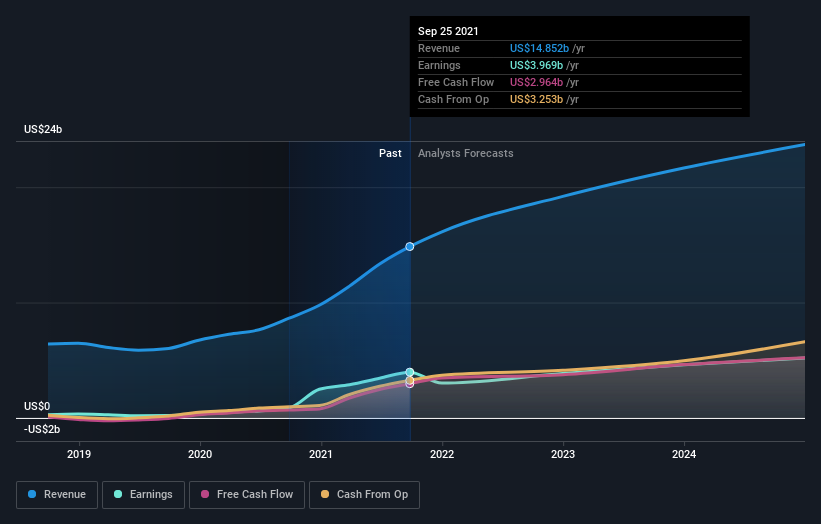Let's talk about the popular Advanced Micro Devices, Inc. (NASDAQ:AMD). The company's shares received a lot of attention from a substantial price movement on the NASDAQGS over the last few months, increasing to US$162 at one point, and dropping to the lows of US$109. Some share price movements can give investors a better opportunity to enter into the stock, and potentially buy at a lower price. A question to answer is whether Advanced Micro Devices' current trading price of US$119 reflective of the actual value of the large-cap? Or is it currently undervalued, providing us with the opportunity to buy? Let’s take a look at Advanced Micro Devices’s outlook and value based on the most recent financial data to see if there are any catalysts for a price change.
What is Advanced Micro Devices worth?
According to my valuation model, the stock is currently overvalued by about 31%, trading at US$119 compared to my intrinsic value of $90.70. This means that the opportunity to buy Advanced Micro Devices at a good price has disappeared! If you like the stock, you may want to keep an eye out for a potential price decline in the future. Given that Advanced Micro Devices’s share is fairly volatile (i.e. its price movements are magnified relative to the rest of the market) this could mean the price can sink lower, giving us another chance to buy in the future. This is based on its high beta, which is a good indicator for share price volatility.
Can we expect growth from Advanced Micro Devices?

Investors looking for growth in their portfolio may want to consider the prospects of a company before buying its shares. Buying a great company with a robust outlook at a cheap price is always a good investment, so let’s also take a look at the company's future expectations. Advanced Micro Devices' earnings over the next few years are expected to increase by 27%, indicating a highly optimistic future ahead. This should lead to more robust cash flows, feeding into a higher share value.
What this means for you:
Are you a shareholder? AMD’s optimistic future growth appears to have been factored into the current share price, with shares trading above its fair value. At this current price, shareholders may be asking a different question – should I sell? If you believe AMD should trade below its current price, selling high and buying it back up again when its price falls towards its real value can be profitable. But before you make this decision, take a look at whether its fundamentals have changed.
Are you a potential investor? If you’ve been keeping an eye on AMD for a while, now may not be the best time to enter into the stock. The price has surpassed its true value, which means there’s no upside from mispricing. However, the optimistic prospect is encouraging for AMD, which means it’s worth diving deeper into other factors in order to take advantage of the next price drop.
So while earnings quality is important, it's equally important to consider the risks facing Advanced Micro Devices at this point in time. Be aware that Advanced Micro Devices is showing 2 warning signs in our investment analysis and 1 of those is a bit unpleasant...
If you are no longer interested in Advanced Micro Devices, you can use our free platform to see our list of over 50 other stocks with a high growth potential.
Have feedback on this article? Concerned about the content? Get in touch with us directly. Alternatively, email editorial-team (at) simplywallst.com.
This article by Simply Wall St is general in nature. We provide commentary based on historical data and analyst forecasts only using an unbiased methodology and our articles are not intended to be financial advice. It does not constitute a recommendation to buy or sell any stock, and does not take account of your objectives, or your financial situation. We aim to bring you long-term focused analysis driven by fundamental data. Note that our analysis may not factor in the latest price-sensitive company announcements or qualitative material. Simply Wall St has no position in any stocks mentioned.
The views and opinions expressed herein are the views and opinions of the author and do not necessarily reflect those of Nasdaq, Inc.


